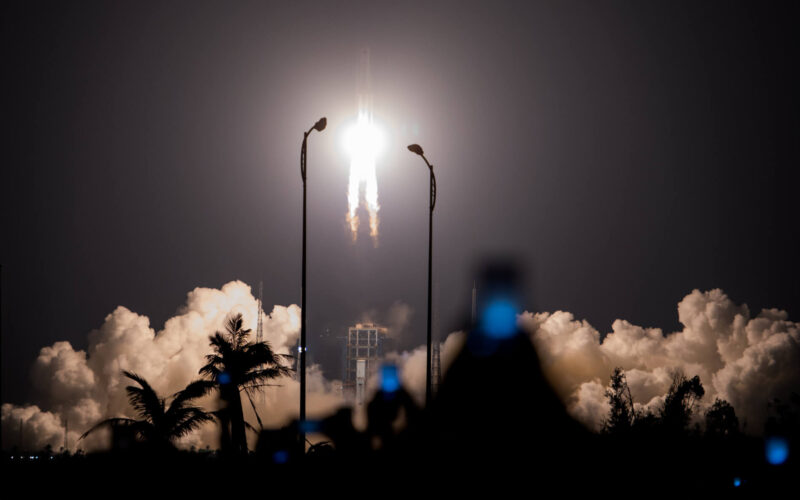China’s space program reaches an important milestone as Chang’e 5 spacecraft is successfully launched on a mission to collect lunar surface samples.
Chang’e 5 robotic spacecraft blasted off on the country’s most powerful Long March-5Y rocket on the evening of November 23, 2020 (4.30am Beijing time on November 24, 2020). The launch was operated from the Wenchang launch center in the island of Hainan, China’s southernmost point. The State channel CCTV broadcasted the launch that was called a success by the China National Space Administration (CNSA).
It should take around eight days for the spacecraft to reach the Moon. Once it lands, it can only stay one lunar daytime or about 14 Earth days due to the freezing nights on the Moon. The entire mission will take around 23 days.
Chang’e 5 is perhaps the most complicated mission that China has ever launched as it is fairly heavy with all of the hardware that weighs about 8.2 metric tons or around 18,000 pounds. A total of four robotic spacecraft for Chang’e 5 were launched. They will work together on drilling 2 meters into the moon’s surface to bring back between 2 to 4 kilograms of lunar samples back to Earth.
“The biggest challenges are the sampling work on the lunar surface, take-off from the lunar surface, rendezvous and docking in the lunar orbit, as well as high-speed re-entry to Earth,” said Pei Zhaoyu, the director of the space administration’s Lunar Exploration and Space Engineering Center. “We can conduct sampling through circumlunar and moon-landing exploration, but it is more intuitive to obtain samples to conduct scientific research – the method is more direct.”
It was the first time since the 1970s that a mission to collect samples from the Moon was launched by any country. If successful, it would put China next to the US and the Soviet Union, the only other two countries to have successfully retrieved lunar samples. The Apollo program was the first one to bring back a collection of extraterrestrial materials, a total of 382 kg to be studied by scientists.
The findings could help deepen the knowledge of the Moon and solar system in general. The mission will also be a way for China to test its capabilities and plan more complex space projects. In 2019, China already carried the first landing on the far side of the Moon and aims to have a permanent space station in service in around 2022.

